Msp Drawings of Girls and Boys
Last Updated on December 21, 2021
Many art students begin the year by brainstorming possible ideas, topics or themes for their art projects. This article features creative mind map examples and other visual brainstorming illustrations to inspire high school students.


Sometimes coming up with ideas for an Art project takes place within the classroom – an interactive discussion between students and teachers; on other occasions students formally document ideas within their sketchbooks. Humans have a tendency to think in a multi-dimensional way – that is, with lots of things occurring simultaneously, triggering further ideas. Rather than attempting to record thoughts in a sequential, linear fashion (i.e. writing these down in lists or paragraphs), students can find it helpful to collect, record and organize ideas graphically, using visual diagram such as a mind map. If this brainstorm is submitted as part of assessment material, it is essential that this is presented well.
What is a mind map?
Mind map creator Tony Buzan coined the term 'mind map' to refer to a diagram that has a branch or root-like structure radiating from a central image on the page, and which uses lines and color to show relationships, groupings and connections between words, ideas and images. A mind map helps students think clearly and ensures that a range of possibilities are considered, encouraging thinking outside-the-box.
How to make a mind map
Tony Buzan's recommendations include: using a landscape format; starting with a central image to represent your topic or theme; using curving lines to add main branches to the center and then connecting these to smaller branches; using single words and images; and adding colors for aesthetic and organizational purposes.

It should be noted, however, that when your Art teacher asks you to begin creating a mind map, they are almost always happy with any visually pleasing representation of ideas – such as a tree diagram, spider diagram – or even just a splurge of thoughts on paper, as long as it documents a range of ideas and possibilities connected to a theme (or a set examination topic). The examples below, therefore, contain different visual brainstorming methods, not just those that are official mind maps.
Guidelines for Art Students
When brainstorming ideas for a high school Art project, remember that:
- Single words are unlikely to express an idea adequately. As you think though possibilities, it is likely that you will want to jot down whole phrases and brainstorm possible ways of beginning or approaching a subject. Intentions and possibilities should be clear to someone else who reads the mind map at a later date;
- Images should be sourced first-hand (i.e. drawn or photographed yourself) or clearly referenced, and should be integrated within the mind map in a visually pleasing way;
- The appearance of the mind map is crucially important. This is likely to be one of the first things an examiner sees when opening your sketchbook – first impressions count.
Creative mind map examples and visual brainstorming ideas
Please note that although some of these presentation methods are more complex and time consuming than others, this not does mean they are better. Sometimes a quick, expressive splurge of ideas upon paper is all that is needed.
Take a beautiful photograph to place in the center, as in this example of a mind map by Dave Tiedemann:

Use painted areas to contain text, as in these creative examples by artist Martha Rich:

Draw lots of small pictures to illustrate ideas visually, as inspired by this map of London reimagined as the human body, illustrated by Nicole Mollet:
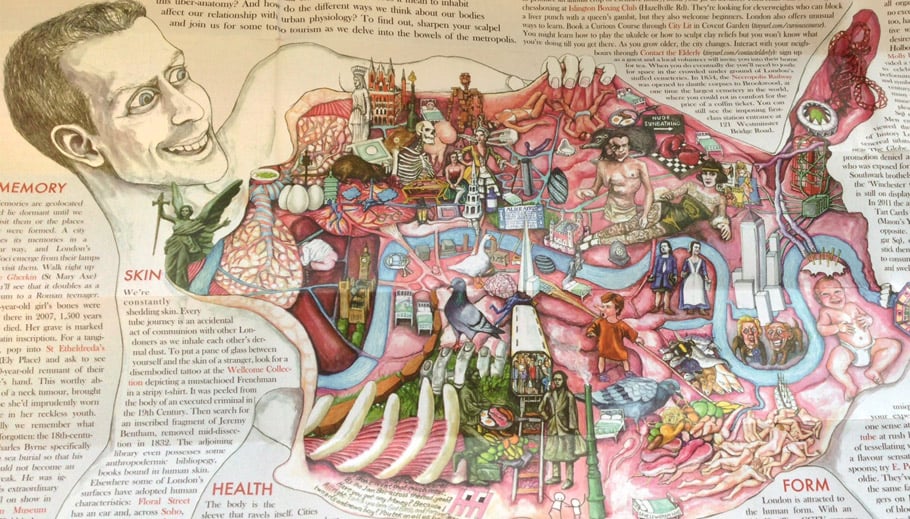
Use collage to make a mixed media mind map, as in this example by high school student Chloé Zinn:

Integrate a mind map with an 'incomplete' image that extends across the page, inspired by this digital illustration by Alex Plesovskich:
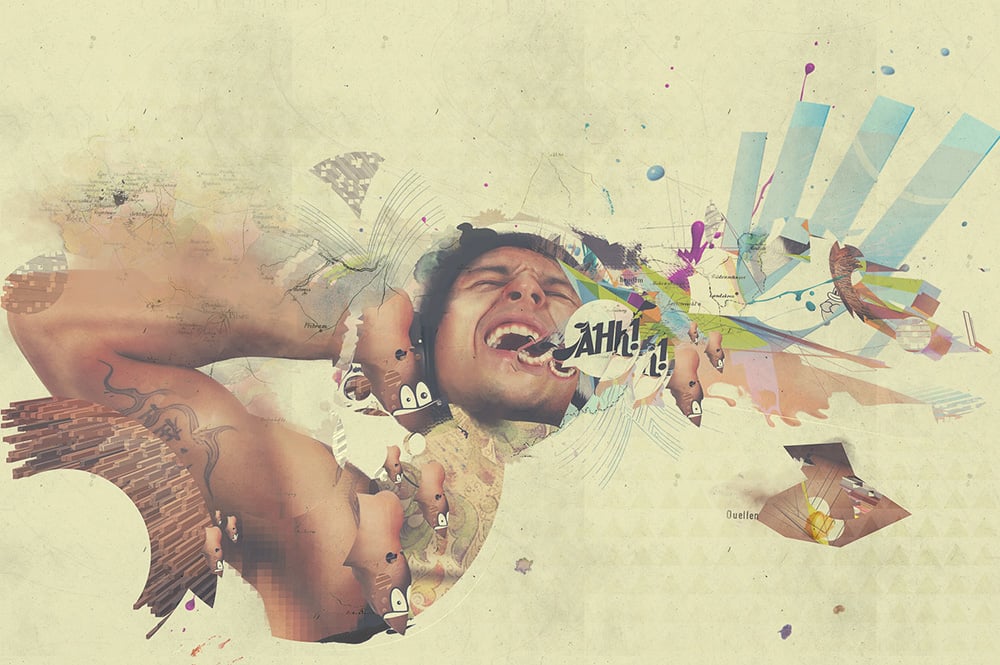
Collage torn images, textures and surfaces together, as in this example by Brittney:
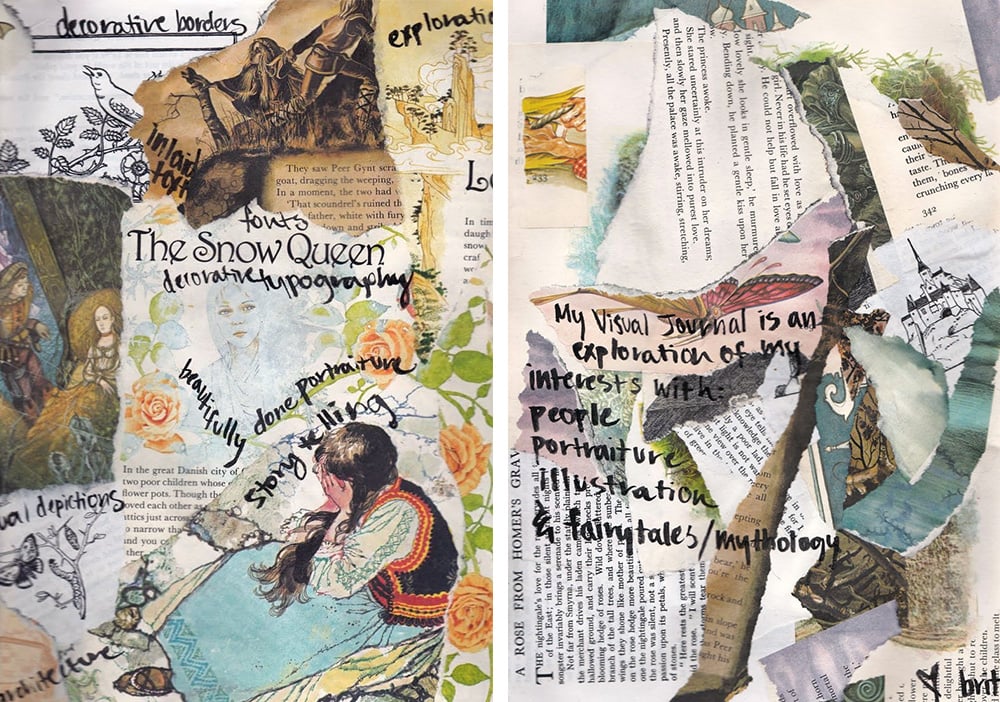
Create mind maps from flowing painterly forms, as in this amazing example by artist Ward Shelley:

Draw over an abstract watercolour ground, as in this artist mind map by Roberta Faulhaber:
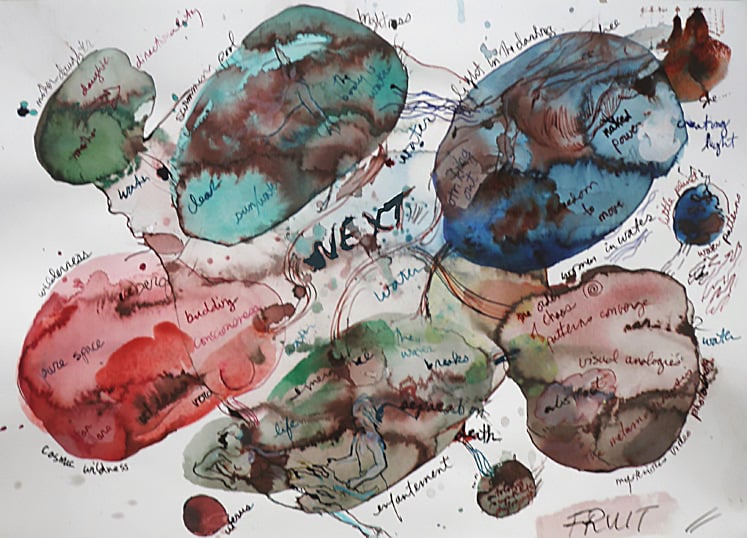
Create a simple mind map using text, with circles and dots for emphasis, as in these examples by Lia Perjovschi:
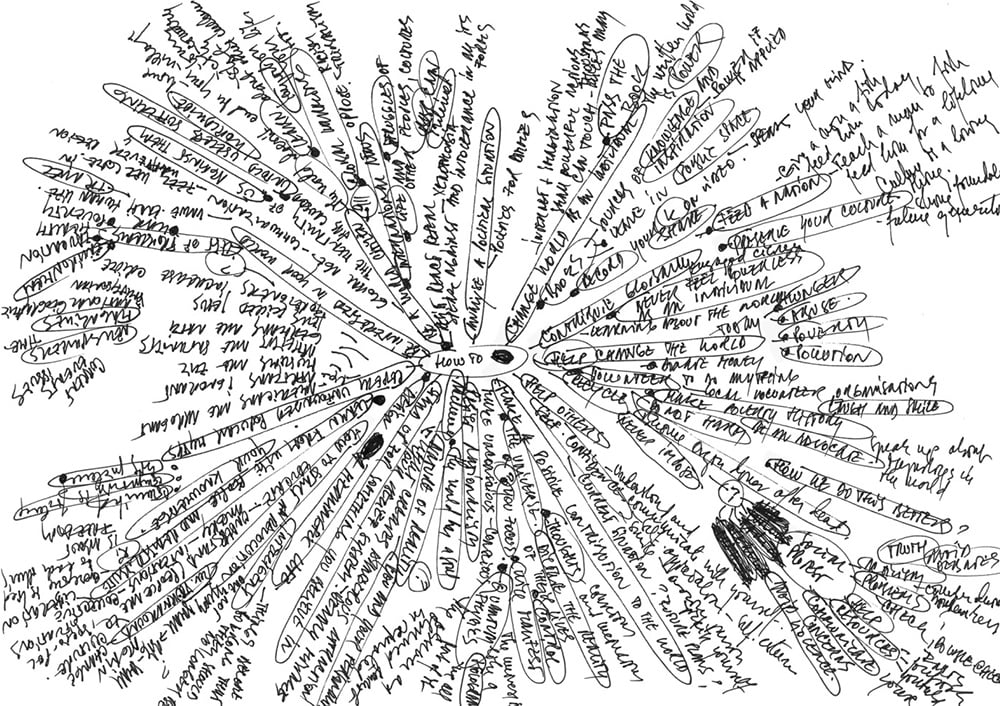
Record a stream of consciousness using handwriting and images, as in this journal by Sabrina Ward Harrison:

Brainstorm ideas using chalk on a blackboard or whiteboard and photograph it, such as this mind map by Julien Muckensturm:

Make a mind map on small pieces of paper and cardboard, inspired by the road map created from multiple sketches by strangers, compiled by Nobutaka Aozaki:
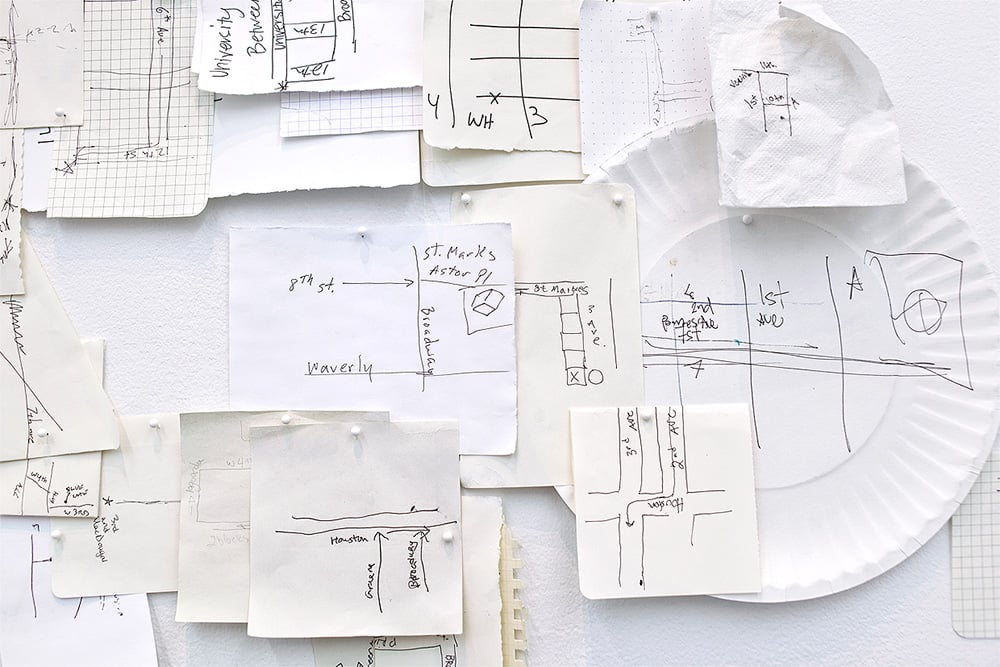
Attach images and notes to a pinboard, as in the 'Capturing Memory Mind Map' by Red Biddy:

Hand write ideas over a photograph, as in this example by Stefan Sagmeister:

Create a mind map online using free mind map software, a mind map app or any other digital drawing tool, as in these bubble diagrams by Leoni Wharton:

Make a textural collage of ideas, as in this GCSE Art mind map by Jessica Rump, while studying at King's Lynn Academy:

Produce a sprawling hand-drawn mind map, as in this example by Tlemermeyer:
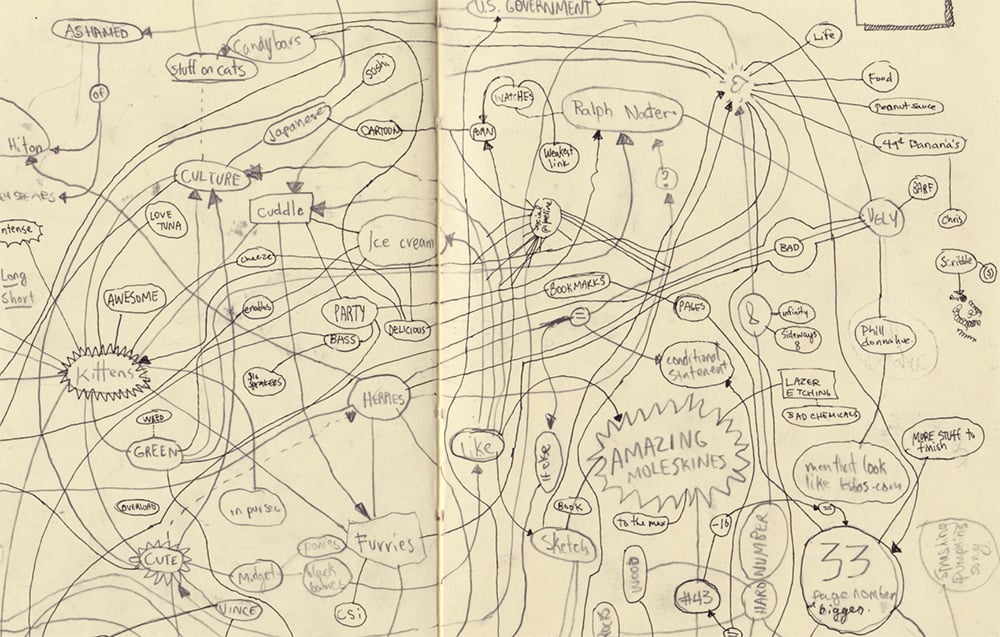
Use illustrations and colors to communicate and emphasize ideas, as in these sketchbook pages by Eva-Lotta Lamm:

Integrate observational drawings, as in this example by high school student Laura Viruly:

Organize ideas visually in a grid formation, as in this illustration by Grid London:

Add a painterly splurge in the center, from which ideas extend, as in this Year 11 exam example from Bishop Luffa School:
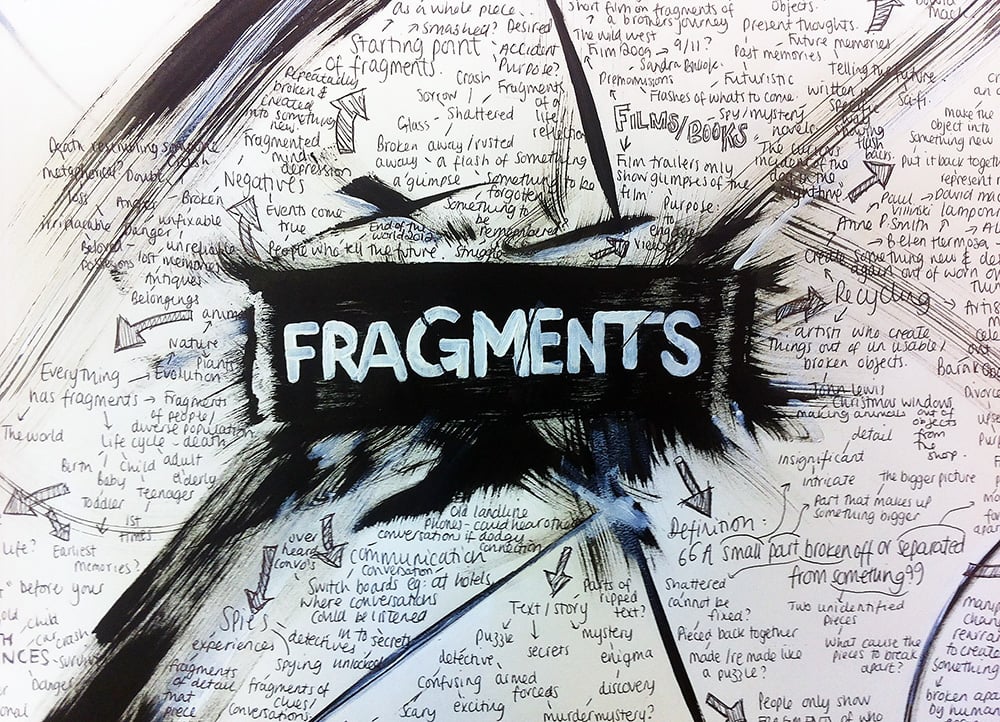
Integrate text within an artwork, as in this example by Julia Lewis-Thomas:

Use multiple colored pens, as in these examples by Asiphe Sinari and Elà Aguiar:
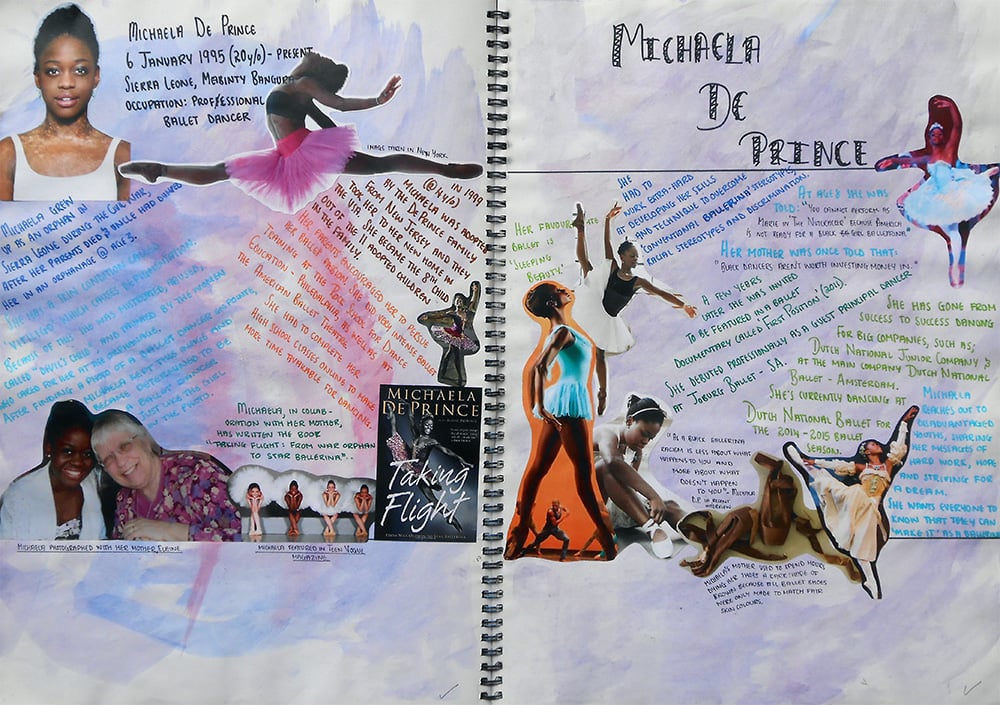

Use a ruler to frame images and text, as in this example by Annie Richardson:
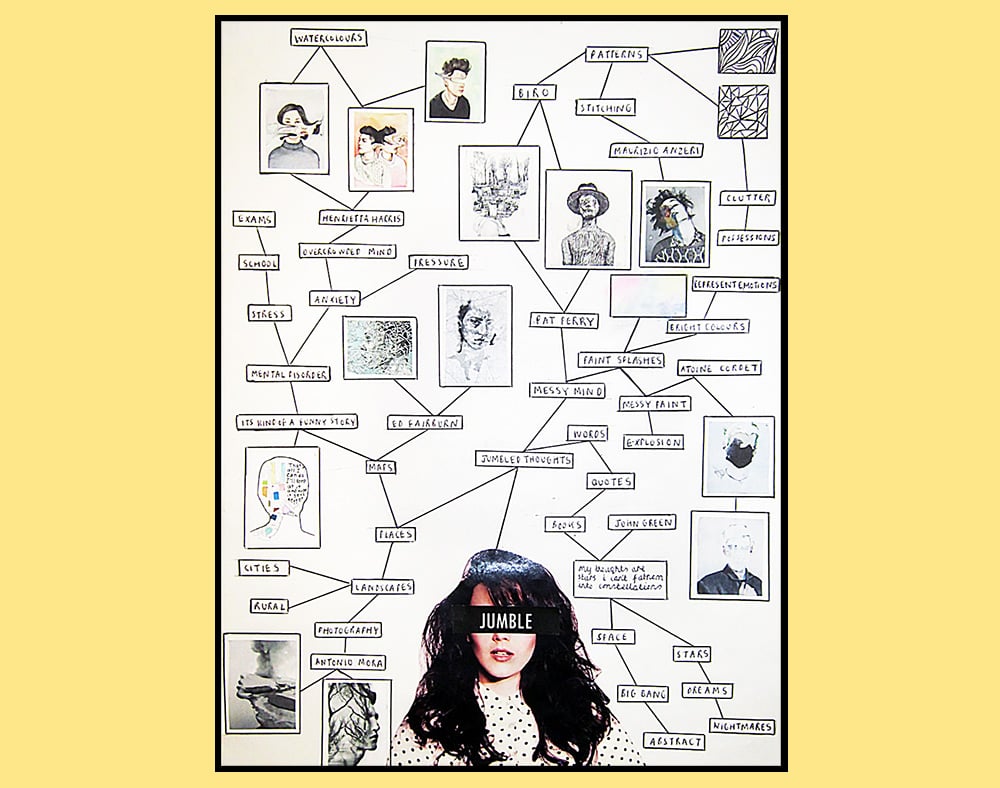
Once you have selected a presentation method for your brainstorming, the next step is to actually generate some ideas! Please read our guide to selecting a great Art project idea.
You may be interested in our new book: Outstanding High School Sketchbooks . This book has high-resolution images so that fine details and annotation are clear, making it an excellent resource for students and schools. Learn more!
Need more help with your high school sketchbook?
This article is part of a series we have published about high school sketchbooks. You may also be interested in viewing our other sketchbook resources:
- Painting / fine art sketchbooks
- Photography sketchbooks
- Graphic design sketchbooks
- Textile and fashion design sketchbooks
- Sculpture, architecture, and 3D Design sketchbooks
- Digital sketchbooks
- Tips for producing an amazing high school sketchbook (this was originally written for A Level Art and IGCSE/GCSE Art students, but is relevant for students creating a sketchbook, art journal, or visual diary as part of any high school art qualification)
- How to annotate a sketchbook: a guide for art students
This mind map collection is continually updated. Please bookmark this page so that you can return to it when needed! If you would like to submit your own mind map for inclusion, please contact us. 🙂

Amiria has been an Art & Design teacher and a Curriculum Co-ordinator for seven years, responsible for the course design and assessment of student work in two high-achieving Auckland schools. She has a Bachelor of Architectural Studies, Bachelor of Architecture (First Class Honours) and a Graduate Diploma of Teaching. Amiria is a CIE Accredited Art & Design Coursework Assessor.
Source: https://www.studentartguide.com/articles/how-to-make-a-mindmap-creative-ideas
0 Response to "Msp Drawings of Girls and Boys"
Enregistrer un commentaire